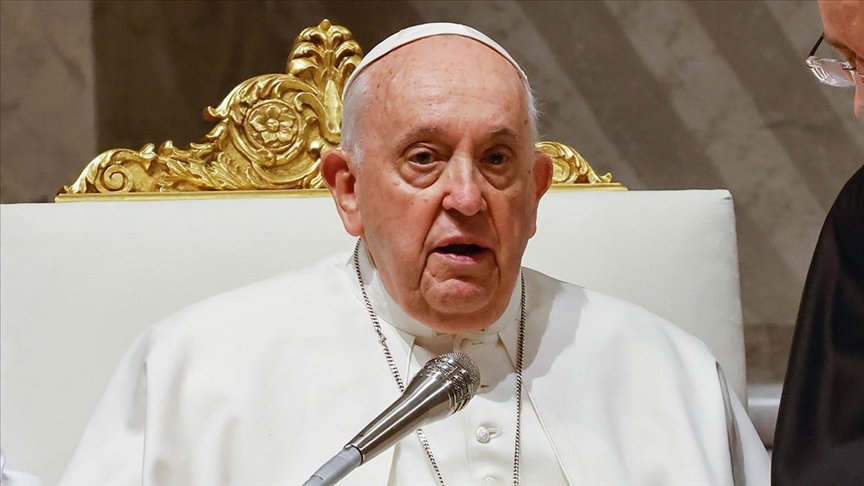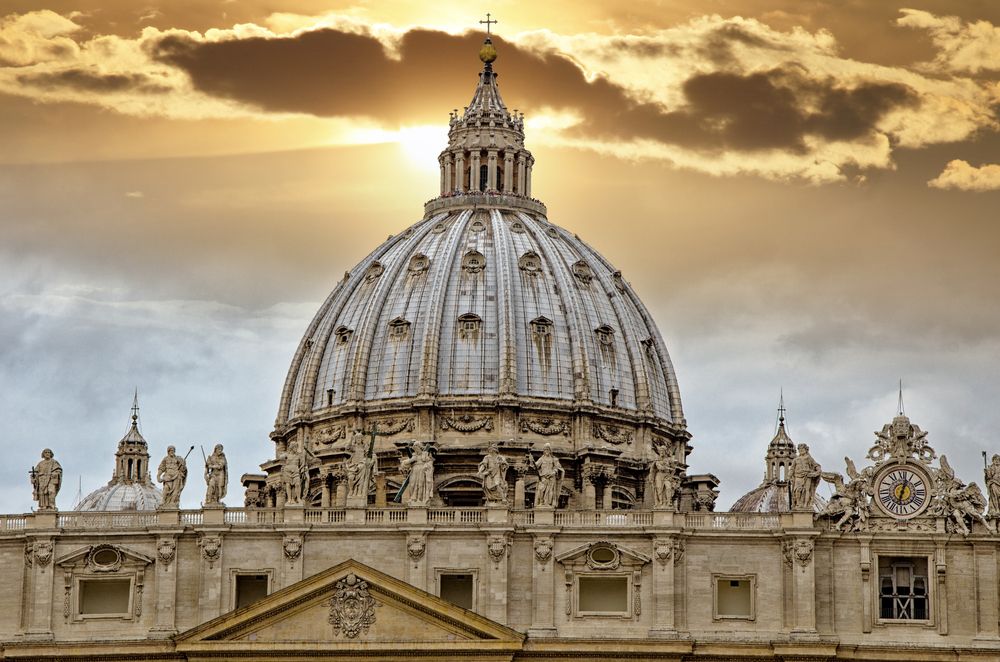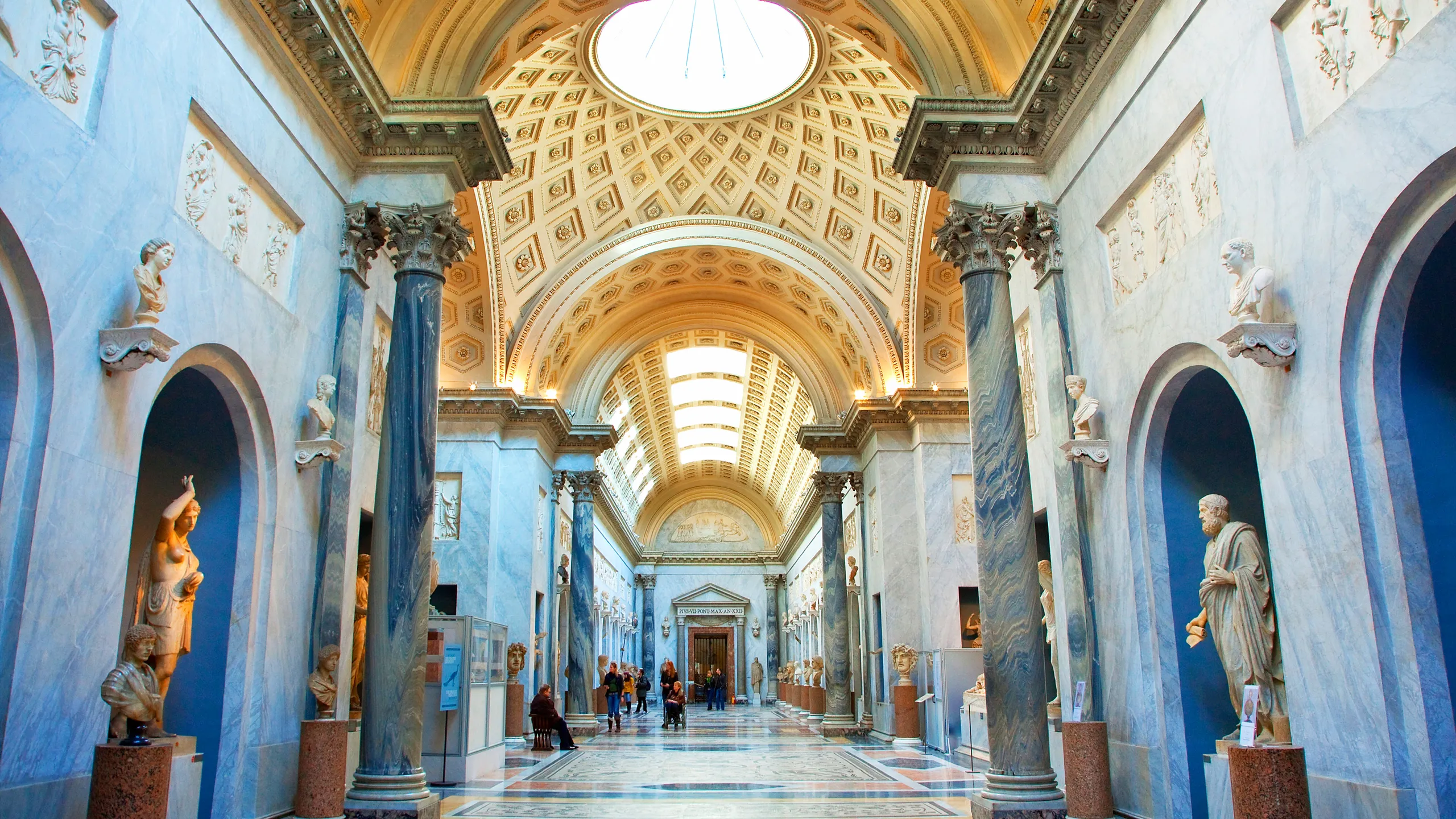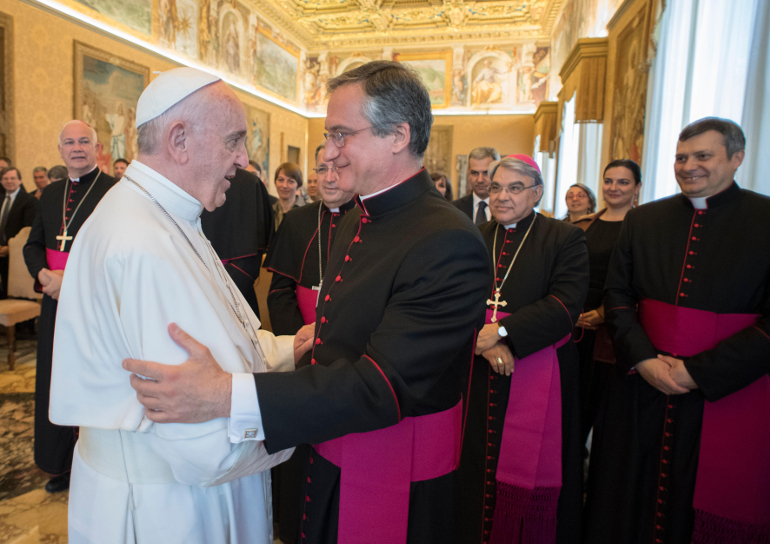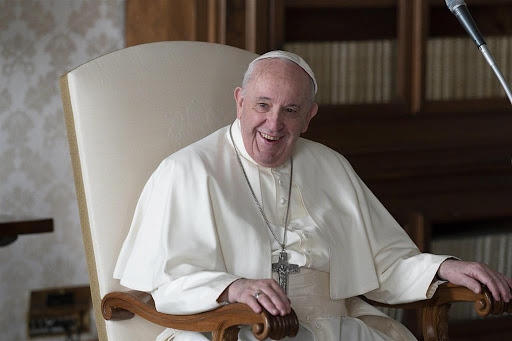
The Vatican, the spiritual and administrative heart of the Catholic Church, employs a multifaceted communication strategy that reflects its rich traditions while embracing the demands of the modern world. This article delves into the key components and intricacies of the Vatican communication strategy.
The Vatican's communication strategy intricately weaves together centuries-old traditions with contemporary tools, recognizing the importance of adapting to the evolving media landscape. This unique blend allows the Vatican to reach a diverse global audience while maintaining its distinctive identity.
The Papal Presence
At the heart of the Vatican's communication strategy lies the pivotal role of the Pope, a figurehead whose influence extends far beyond the confines of the Vatican City. The Pope is not merely a religious leader; he is the embodiment of the Catholic Church's values, beliefs, and aspirations, serving as a powerful communicator to a global audience.
Symbolic Significance
The Pope's presence holds profound symbolic significance. As the earthly representative of the divine, his words and actions are perceived as reflections of the Church's teachings. The Vatican leverages the Pope's symbolic role to convey messages that resonate with the core tenets of Catholicism while also addressing broader societal issues.
Charismatic Communication
The Pope's charisma plays a crucial role in captivating audiences. Whether addressing the faithful during a Mass or engaging with world leaders on matters of global importance, the Pope's charisma transcends religious boundaries, making his messages accessible and impactful. This charismatic communication style enhances the Church's ability to connect with diverse audiences in an ever-changing world.
Crafted Messages For All Audiences
From the intricacies of pastoral letters to the grandeur of public appearances, every message from the Pope is carefully crafted to reach a broad spectrum of individuals. The language used is inclusive, emphasizing universal values and principles that can resonate with believers and non-believers alike. This deliberate approach ensures that the Pope's messages are not confined to the ecclesiastical realm but extend to the global community.
Engaging With Contemporary Issues
The Vatican recognizes the importance of addressing contemporary issues, and the Pope serves as a voice of moral authority in these discussions. Whether speaking out on social justice, human rights, or environmental concerns, the Pope's communication reflects a commitment to engaging with the challenges of the modern world. This proactive stance helps the Church remain relevant and responsive to the evolving needs of society.
Digital Presence
In an era dominated by digital communication, the Vatican ensures the Pope's messages reach a vast online audience. Social media platforms, official websites, and live streaming services amplify the Pope's voice, allowing his messages to transcend geographical boundaries and cultural differences. The digital presence is not just a technological adaptation but a strategic move to connect with the tech-savvy and diverse global audience.
The Essence Of The Vatican’s Communication Strategy
In the intricate tapestry of the Vatican's communication strategy, technology is not an end in itself; rather, it is a means to achieve a profound and resonant connection with diverse audiences worldwide. The essence of this initiative lies not in the sophistication of the tools employed but in the efficacy of delivering a message that transcends borders and resonates with the hearts and minds of believers.
Purposeful Communication
At the core of the Vatican's communication strategy is a commitment to purposeful communication. It recognizes that the ultimate goal is not simply to embrace technology for its own sake but to ensure that the intended message reaches its audience effectively. This purpose-driven approach guides the selection of communication channels, emphasizing meaningful engagement over mere technological trends.
Inclusivity Beyond Technology
Acknowledging the global diversity of the Catholic Church's followers, the Vatican understands that not all are situated in technologically advanced regions. Hence, the strategic use of legacy technology, such as short-wave radio, remains integral. This medium serves as a lifeline, allowing the Church's message to permeate even into remote areas where modern communication tools might falter.
The Role Of Short-Wave Radio
Short-wave radio stands as a testament to the Vatican's commitment to inclusivity. In regions lacking internet access or advanced communication infrastructure, this traditional technology becomes a vital conduit. Whether broadcasting news updates, musical programs, meditations, or Latin masses, short-wave radio ensures that the Church's voice is heard, irrespective of the technological landscape.
Tailored Content For All
The versatility of the communication channels ensures a diverse range of content tailored to cater to various preferences and demographics. Listeners can tune in to receive the latest news, immerse themselves in musical programs, find solace in meditative sessions, or partake in the rich tradition of a Latin mass. The Vatican's approach is not one-size-fits-all; instead, it recognizes the diverse needs of its audience and tailors its content accordingly.
Meaningful, Personal Connection
Regardless of the chosen medium—be it cutting-edge technology or time-honored short-wave radio—the overarching objective remains a meaningful, personal connection. The Vatican strives to bridge geographical, cultural, and technological divides, fostering a communication environment where the Church speaks intimately to each individual, forging a personal connection that transcends physical boundaries.
Cultural Diplomacy - Vatican Museums And Beyond
In the realm of cultural diplomacy, the Vatican's approach transcends religious boundaries, embracing its rich artistic and historical heritage as a means of fostering international understanding. Central to this strategy is the role of public relations (PR), which acts as a dynamic force in showcasing the Vatican Museums' priceless treasures, attracting global visitors, and underlining the Catholic Church'sprofound contributions to the world of art and culture.
Preserving Heritage
At the heart of the Vatican's cultural diplomacy lies the commitment to preserving and celebrating the rich tapestry of artistic and historical treasures under its care. The Vatican Museums house an unparalleled collection of artworks, manuscripts, and artifacts spanning centuries, representing a collective human heritage that extends far beyond the boundaries of religious affiliation.
Strategic Public Relations
Public relations emerges as a strategic tool in the Vatican's arsenal, employed with precision to communicate the cultural wealth held within its museums. Through carefully curated campaigns, media interactions, and community engagement, the Vatican utilizes PR to elevate the profile of its cultural offerings on a global stage.
Attracting Global Visitors
Effective public relations serves as a bridge, inviting art enthusiasts, historians, and curious minds from every corner of the world to explore the Vatican Museums. By strategically positioning these cultural gems, the Vatican ensures that visitors perceive the Museums not just as a religious institution's collection but as a global treasure trove of art and history.
Cultural Exchange And Understanding
Beyond attracting visitors, the Vatican's cultural diplomacy aims for a deeper impact. Through PR initiatives, the Museums foster cultural exchange, promoting a mutual understanding of diverse heritages. Exhibitions, collaborations with international institutions, and cultural events become avenues for dialogue, breaking down cultural barriers and building connections on the common ground of shared human history.
Highlighting Contributions To Art And Culture
Public relations plays a crucial role in articulating the significant contributions of the Catholic Church to the world of art and culture. From the masterpieces of the Renaissance to the architectural marvels within Vatican City, PR campaigns weave narratives that emphasize the Church's enduring impact on shaping the cultural landscape of humanity.
Education And Outreach
Beyond the walls of the Museums, public relations extends into educational initiatives and outreach programs. By leveraging various media platforms, the Vatican communicates the stories behind each artifact, fostering an appreciation for the artistic, historical, and cultural dimensions of the Church's legacy.
Evolving Strategies
In the ever-changing realm of media and communication, the Vatican demonstrates a dynamic approach by continually adapting its strategies to align with the shifting landscape. This delicate balance between tradition and innovation presents the Catholic Church with the challenge of remaining relevant in a rapidly evolving world while steadfastly upholding its core values.
Navigating The Digital Frontier
One of the most significant shifts in recent times is the advent of the digital age. Recognizing the transformative power of technology, the Vatican has ventured into digital platforms, leveraging websites, social media, and live streaming to disseminate its messages globally. This move not only broadens the Church's reach but also embraces the preferences of a tech-savvy audience.
Social Media Presence
In response to the prevalence of social media, the Vatican strategically engages with platforms such as Twitter, Facebook, and Instagram. Through these channels, the Church communicates directly with a diverse audience, sharing updates, messages, and engaging in conversations that transcend geographical boundaries. The interactive nature of social media allows for real-time connections and responses, fostering a sense of community among followers.
Preserving Tradition In The Digital Era
While embracing innovation, the Vatican remains mindful of preserving its rich traditions. The digital era hasn't replaced traditional forms of communication; rather, it complements them. The Vatican continues to issue official documents, pastoral letters, and encyclicals, ensuring that the weight of tradition is carried forward into the digital age.
Crisis Communication In The Age Of Information
As information travels at unprecedented speeds, the Vatican has refined its crisis communication strategies. Timely responses, transparency, and a proactive approach in addressing controversies are essential components. The Churchrecognizes that, in the digital era, misinformation can spread rapidly, and effective crisis communication is vital to maintaining trust and credibility.
Interfaith Dialogue In A Globalized World
In a world that is increasingly interconnected, the Vatican actively engages in interfaith dialogue. Through international events, conferences, and collaborative initiatives, the Church fosters understanding and respect among diverse religious communities. The communication strategy extends beyond Catholic circles, promoting a global conversation on shared values and common goals.
Vatican Communication Strategy - FAQs
What Is The Vatican's Secretariat For Communications?
The Vatican's Secretariat for Communications is an organizational entity within the Roman Curia, the administrative apparatus of the Holy See. Established by Pope Francis in 2015, the Secretariat for Communications was created to streamline and coordinate the various communication offices and entities of the Vatican. Its primary aim is to modernize and integrate the Vatican's communication strategy, ensuring a more cohesive and effective approach in disseminating information, engaging with the media, and utilizing modern technologies for outreach. The Secretariat for Communications oversees the Vatican News website, the Vatican Radio, the Vatican Television Center, and other communication channels.
What Is Catholic Social Communications?
Catholic social communications refer to the use of various communication tools and platforms to convey the teachings, values, and messages of the Catholic Church to both its members and the wider global community. This encompasses a broad spectrum of media, including print, broadcast, digital, and social media. The goal of Catholic social communications is to evangelize, educate, and foster dialogue, spreading the Gospel message and promoting social justice, solidarity, and understanding. It involves utilizing modern communication methods while remaining true to the principles and ethics of Catholic teachings.
What Are The Channels Of Communication For A Church?
The channels of communication for a church can vary depending on the size, resources, and technological infrastructure of the specific religious institution. However, common channels include:
- Worship Services:Traditional church services, including Mass, sermons, and other religious gatherings, are primary channels for communicating religious teachings.
- Print Media:Many churches utilize bulletins, newsletters, pamphlets, and other printed materials to communicate announcements, events, and spiritual messages.
- Digital Media:Churches often maintain websites, social media profiles, and email newsletters to reach a broader audience. These platforms can be used for sharing sermons, streaming services, and providing updates.
- Broadcast Media:Some churches may have radio or television programs to broadcast services, sermons, or special events to a wider audience.
- Community Events:Participation in community events, outreach programs, and social initiatives provides opportunities for churches to communicate their values and engage with the local community.
- Educational Programs:Churches may offer educational programs, including classes, workshops, and seminars, as channels for conveying religious teachings and fostering spiritual growth.
- Personal Communication:Individual interactions, pastoral visits, and counseling sessions serve as crucial channels for personal communication within a church community.
Conclusion
The Vatican's communication strategy is a dynamic interplay of tradition, spirituality, and modernity. As the Church navigates the complexities of the contemporary world, its communication efforts remain a crucial aspect of shaping its global image and engaging with believers and non-believers alike.
